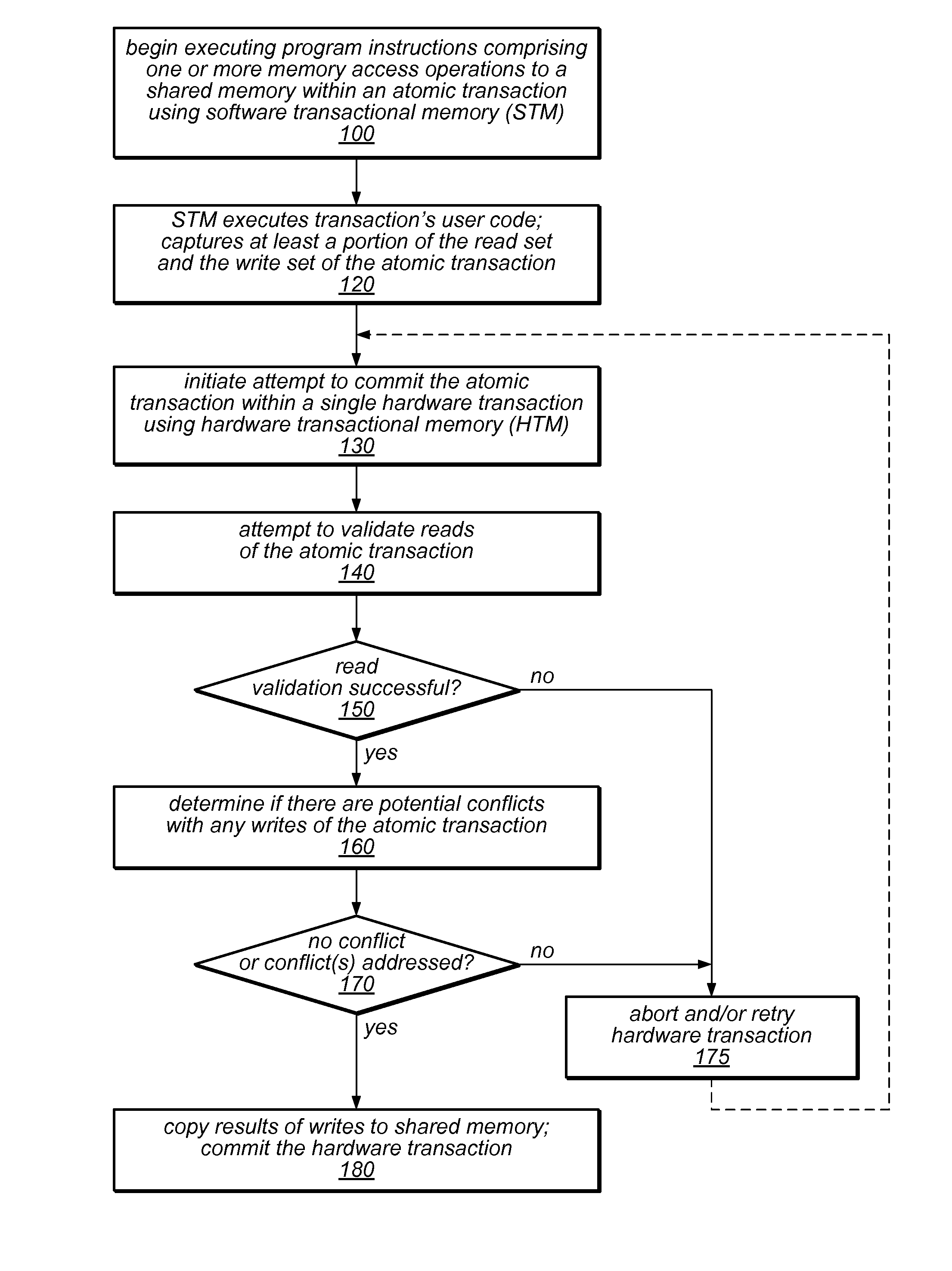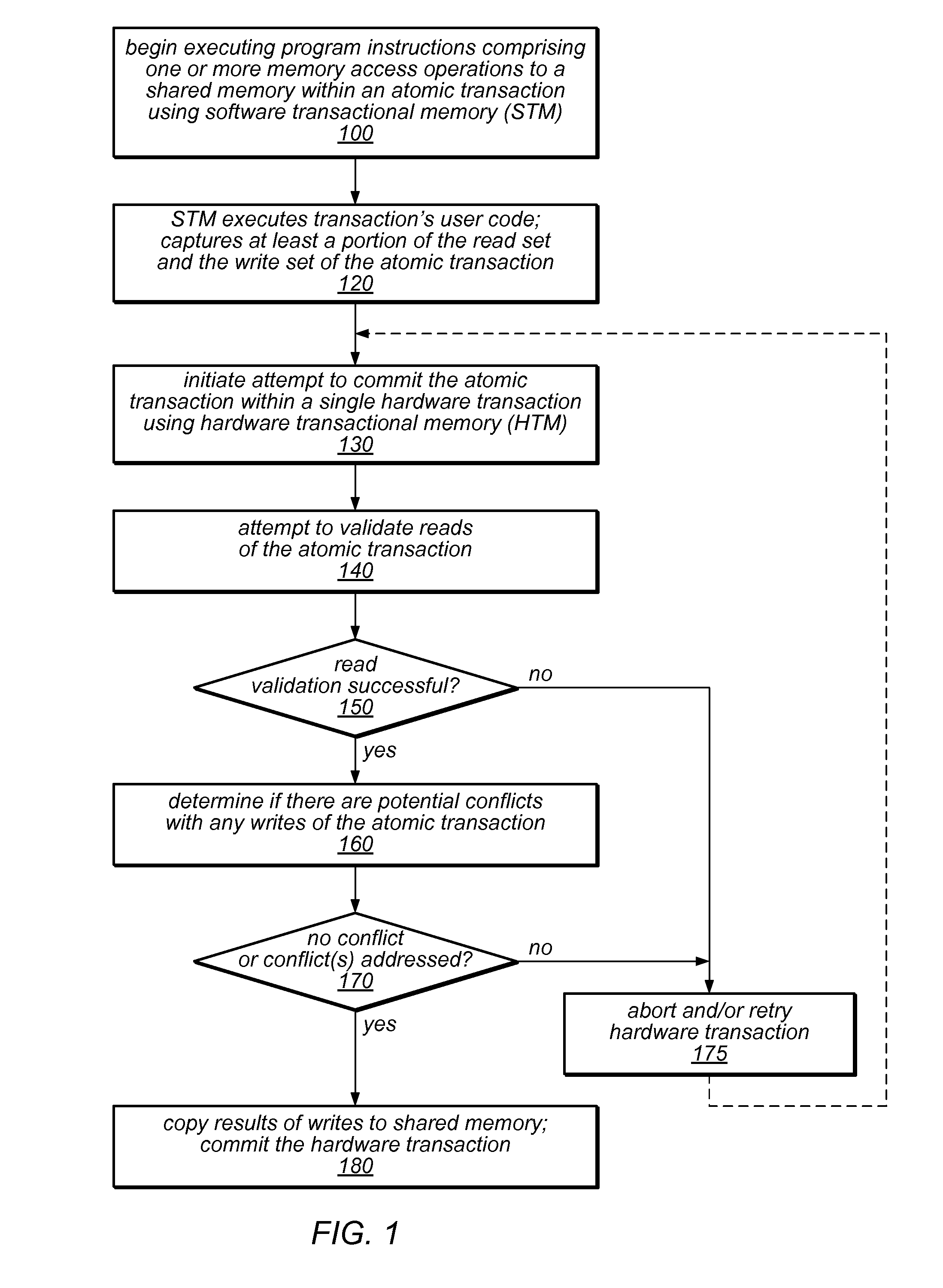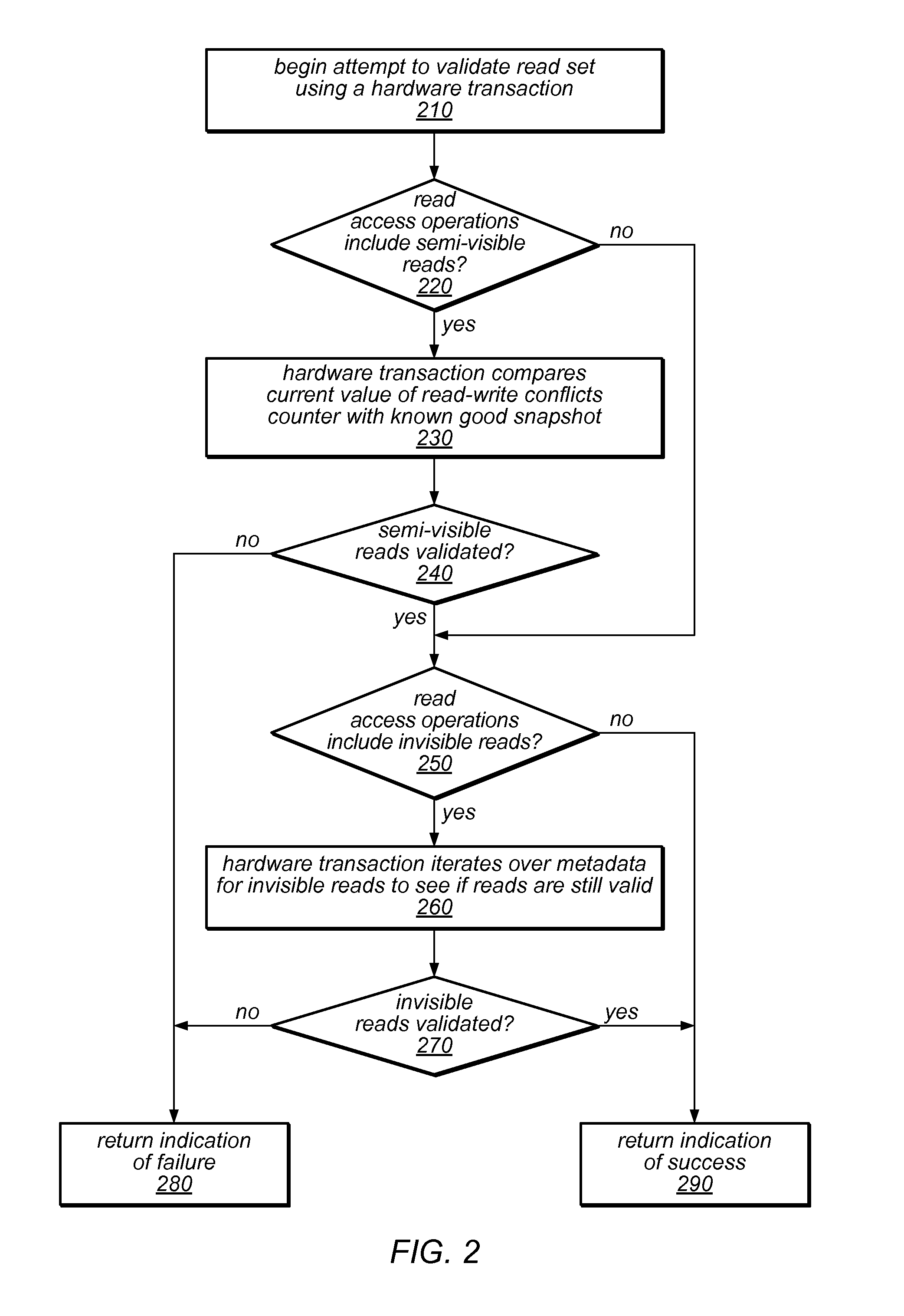System and Method for Committing Results of a Software Transaction Using a Hardware Transaction
a hardware transaction and software transaction technology, applied in the field of concurrent access to shared objects, can solve the problems of difficult (if not impossible) management of concurrent thread interactions, performance limitations, deadlock, etc., and achieve the effect of improving the performance of the software transactional memory (stm)
- Summary
- Abstract
- Description
- Claims
- Application Information
AI Technical Summary
Benefits of technology
Problems solved by technology
Method used
Image
Examples
Embodiment Construction
[0021]The system and methods described herein may in some embodiments exploit hardware transactional memory (HTM) to improve the performance of a software transactional memory (STM) or hybrid transactional memory (HyTM) implementation, even when an entire user transaction cannot be executed within a hardware transaction. For example, in some embodiments the system may include mechanisms to support both HTM and STM implementations for executing code as an atomic transaction. In some such embodiments, user code to be completed as an atomic transaction may be executed within a software transaction, and the software transactional memory implementation may collect read and write sets and / or other information about the atomic transaction. A hardware transaction may then be employed to atomically apply the effects of the user transaction based on the information captured by the software transactional memory.
[0022]As used herein, the term transaction may refer to a series of program instruc...
PUM
 Login to View More
Login to View More Abstract
Description
Claims
Application Information
 Login to View More
Login to View More - R&D
- Intellectual Property
- Life Sciences
- Materials
- Tech Scout
- Unparalleled Data Quality
- Higher Quality Content
- 60% Fewer Hallucinations
Browse by: Latest US Patents, China's latest patents, Technical Efficacy Thesaurus, Application Domain, Technology Topic, Popular Technical Reports.
© 2025 PatSnap. All rights reserved.Legal|Privacy policy|Modern Slavery Act Transparency Statement|Sitemap|About US| Contact US: help@patsnap.com



